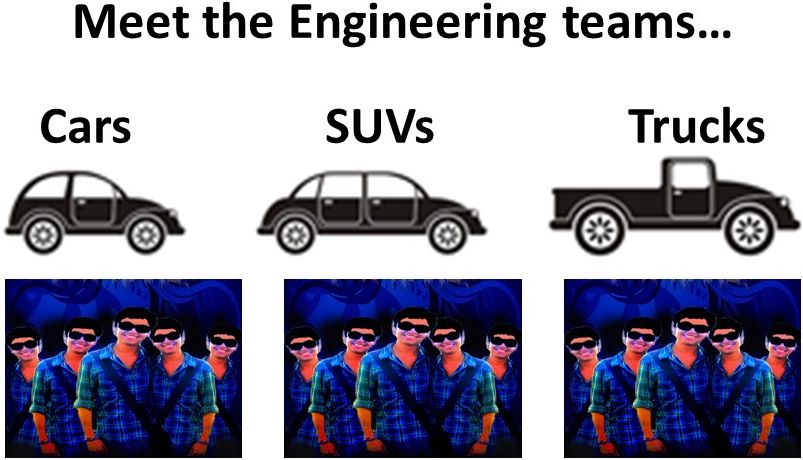| Excerpt from www.NDMA.COM, © 2025 N. Dean Meyer and Associates Inc.
Analysis: Organizing Engineers by Product Lines
structuring all your engineers by product lines leaves out some essential specialists
by N. Dean Meyer
[excerpt from the book, Principle-based Organizational Structure]
In many fields, there are multiple layers of engineering, each building on the lower layers. In the food industry, snack-food chefs and beverage chefs both draw on nutritionists. Car companies employ many layers of engineers, from metalurgists and chemists up through engine and vehicle designers. What happens when layers are missing from the structure? Here's an example:
An Example from ITOne IT department had applications development groups, but no groups dedicated to lower-layer technologies (other than the infrastructure engineers managed by Operations). Jim was given responsibility for manufacturing and supply-chain systems. While working on just-in-time inventory management, he studied electronic data interchange (EDI). And as he automated the factory, he learned a lot about document management. Meanwhile, Donna's financial applications group developed expertise in forecasting algorithms and reporting tools. And Carey's customer applications group learned to quickly deliver small web applications and to analyze the masses of data the company collected on customers. The IT department's structure looked something like this:
Consider the consequences....
Multiple Learning CurvesManagers were encouraged to share their knowledge with one another. But this rarely happened. They allocated all their resources to their own projects. When Jim asked Donna for help with a user-friendly reporting tool for inventory data, her staff were too busy developing financial applications to work on his projects. Whenever a needed technology was missing (or just out of reach), people muddled through. Working outside one's expertise eroded performance, quality, and reliable delivery. Furthermore, multiple learning curves and replication of efforts were costly.
Slowed InnovationNo single leader had the job of ensuring that a comprehensive range of supporting technologies was available. So some critical new technologies were ignored. As a result, and business opportunities were lost. For example, Donna knew she should have explored cloud computing and mobile devices; but her financial applications ran on the mainframe, and she had no time to explore other platforms.
Bottom LineWhen a group is given a primary mission and a secondary mission, the secondary mission won't perform well. It's a gap in the structure. A better answer is to form a group (however small it may be) focused on each and every needed specialty. In practice, this doesn't take more headcount. It may actually save headcount. It's much more efficient to have a specialist on a project team than to have staff working outside their areas of expertise.
|


